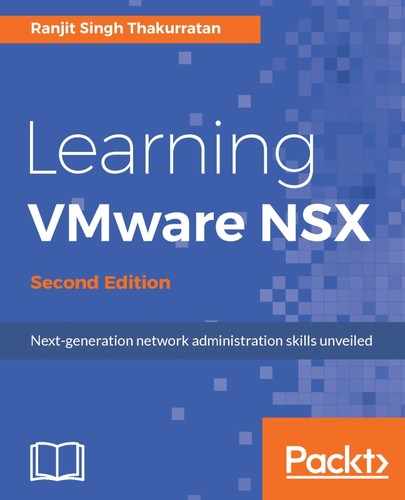VMware NSX-V is a network virtualization platform that allows for software-defined networks and is a critical component of software-defined datacenter architecture. VMware's NSX-V software abstracts the underlying physical network by introducing a software layer that makes it easy to consume network resources by creating multiple virtual networks. NSX-V also allows for deploying multiple logical network services on top of the abstracted layer.
VMware now has two flavors of NSX: NSX-V, and NSX-MH. NSX-V is NSX for a VMware-based hypervisor while NSX-Multi Hypervisor (NSX-MH) is for OpenStack environments. The two versions have many similarities but also are dissimilar in some aspects. This book focuses on the NSX-VMware (NSX-V) version of NSX only. NSX-V will be referred to as NSX for the rest of the book.
The following figure represents the software abstraction of a physical network and networking hardware by NSX. This is synonymous with how the VMware vSphere hypervisor achieves software abstraction of CPU, memory, and storage, making it possible for the creation of multiple virtual machines:

Just as the vSphere hypervisor allows you to create, delete, snapshot, and monitor a virtual machine, NSX allows you to programmatically create, delete, snapshot, and monitor a virtual network. NSX can be deployed on your current physical network infrastructure, and does not require you to upgrade your existing infrastructure.
Lastly, NSX deployment is non-disruptive to your existing network and traffic. It can seamlessly be deployed on top of your existing infrastructure, and consumption of its services can take place in conjunction with your traditional network.
